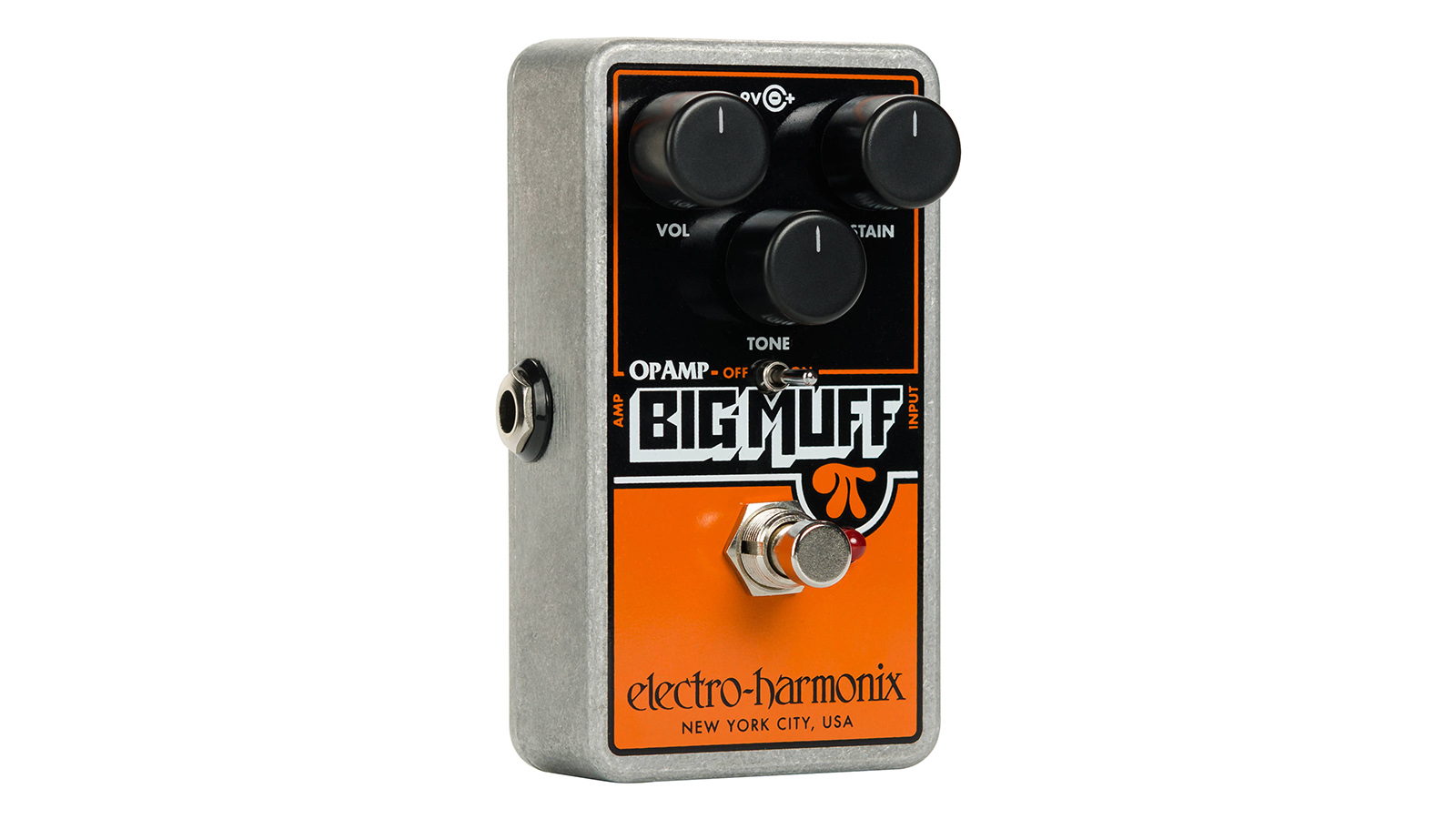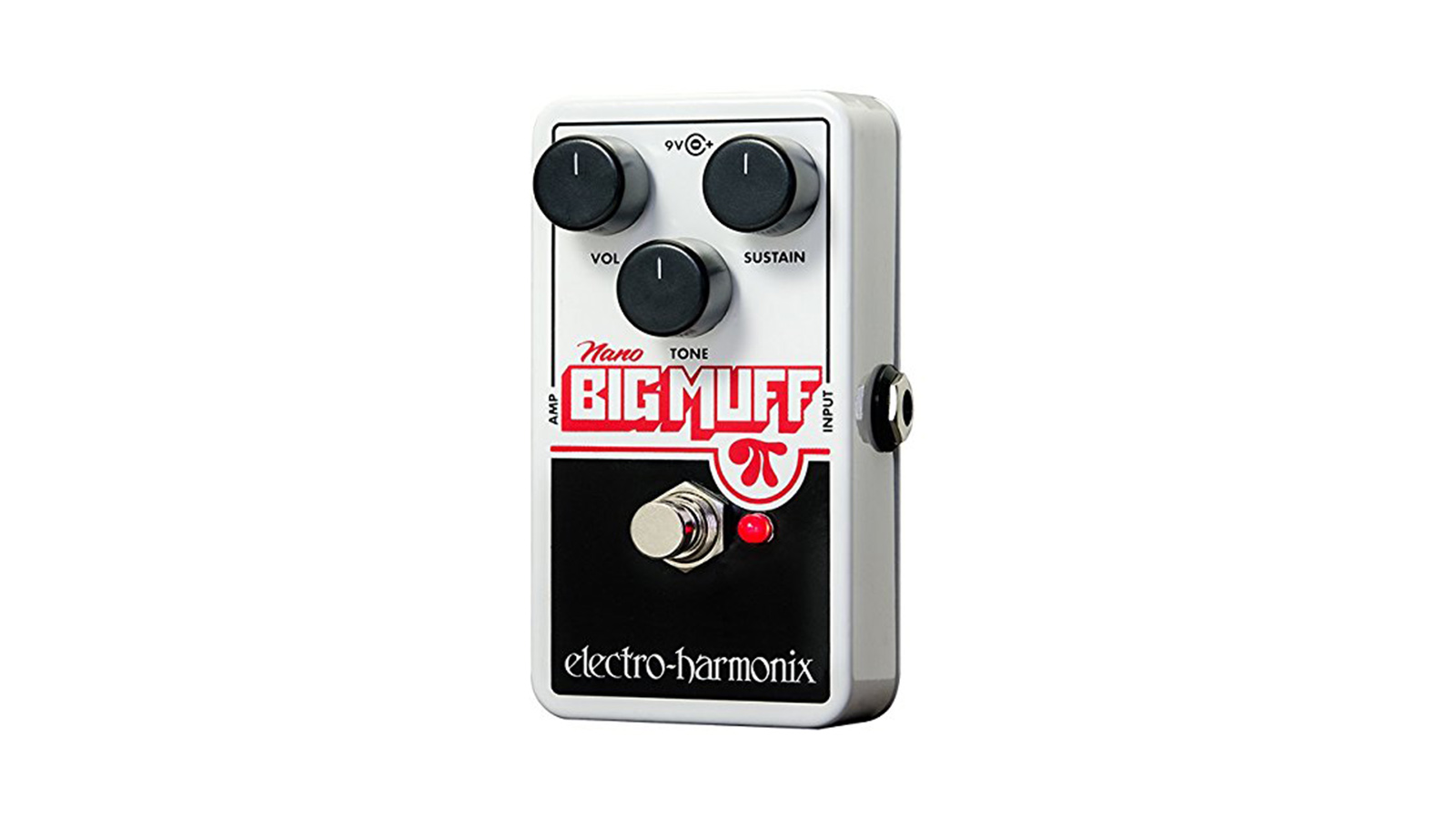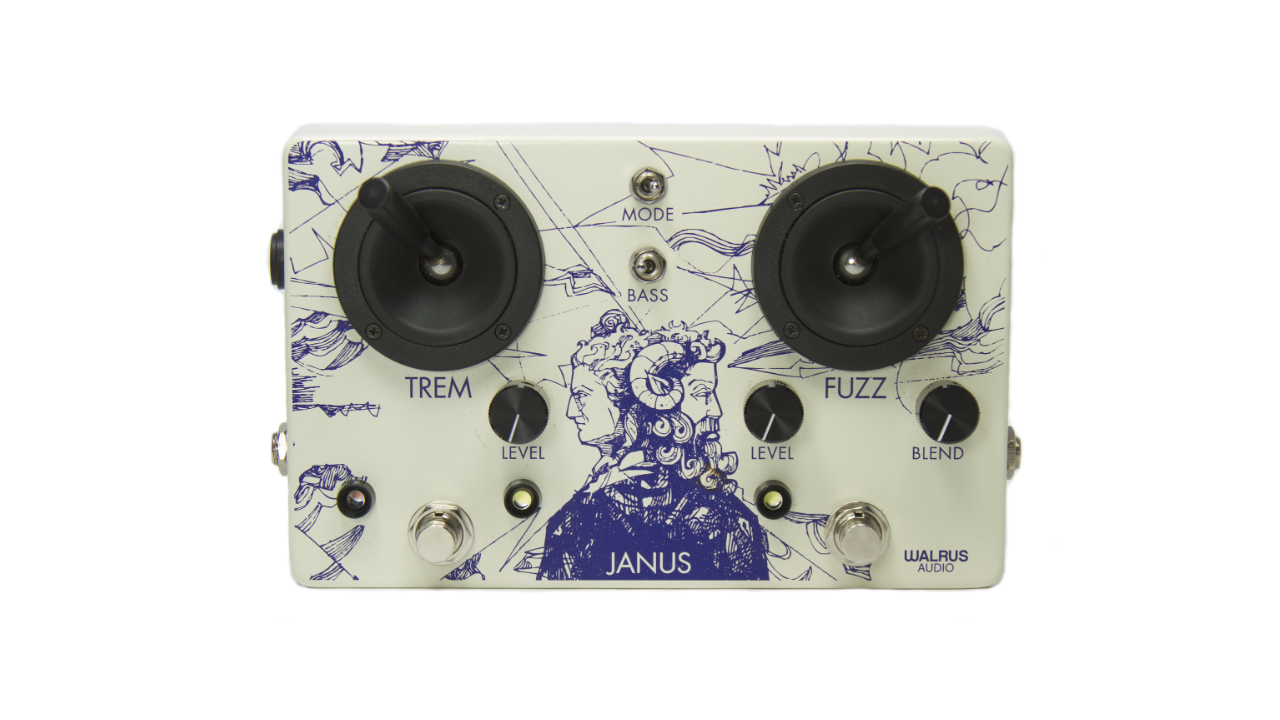Best fuzz pedals 2025: add some filth with this guitar effects essential for your pedalboard
Want to know your Fuzz Face from your Fuzz Factory, or channel Jimi Hendrix? This guide is for you

No two fuzz pedals are alike. That's true of the sheer diversity of pedals that bear the name 'fuzz', and historically was true even within a manufacturing run. Consider that the warm, smooth Fuzz Face, the legato, sustaining Big Muff, the lysergic Fuzz Factory and the psychotically screaming Supersonic Fuzz Gun are all among the best fuzz pedals available. Perhaps only delay has the same breath as an effect.
With that in mind, it's natural to be confused by what's available. Well, don't worry, in this guide, we'll show you some of the best fuzz pedals available on the market, and hopefully save you having to sift through a pile of stompboxes. That said, spending an afternoon trying fuzz pedals is pretty much our idea of heaven.
Fuzz enthusiasts are known as some of the most obsessive characters in the pedal world. Originally this was pure pragmatism. Due to the tolerances of germanium transistors, no two pedals were alike. This led aficionados like Hendrix to audition stacks of Fuzz Faces to find the ones he liked.
We've included some in-depth buying advice at the end of this guide, so if you'd like to read more about the best fuzz pedals, then click the link. If you'd rather get to the products, then keep scrolling.
Best fuzz pedals: Our top picks
In terms of budget recommendations, they don't come more wallet-friendly than the Behringer SF-300. It's a flexible, two-mode fuzz that sounds excellent, for the price of a takeaway pizza. The catch? Well, that plastic case isn't the best, to put it mildly.
Otherwise, every player needs to own a Big Muff at some point in their life. Electro-Harmonix has made it easier for everybody by systematically reissuing every era of the Big Muff over the last few years, so consumers are spoiled for choice. For our money the two standouts have always been the Russian Big Muff, especially on bass, and the op-amp NYC, for that Siamese Dream sound.
If you fancy going a little wilder, the original madcap fuzz is probably what you seek. Used by the likes of Robert Fripp, Matt Bellamy, Rivers Cuomo, Buckethead, Stephen Carpenter, St. Vincent, Jack White, and J. Mascis, you're in good company with the ZVex Fuzz Factory on your pedalboard. The controls may not really describe what they do, and yes, it has been known to pick up radio transmissions, but that's all part of the charm of this insane, inspirational and totally weird fuzz pedal.
Best fuzz pedals: Product guide

1. Electro-Harmonix Op-Amp Big Muff Reissue
Our expert review:
Specifications
Reasons to buy
Reasons to avoid
Although many household names have used the Big Muff over the years, perhaps the band most associated with the pedal is Smashing Pumpkins. On their 1993 classic Siamese Dream, they gatecrashed the grunge party with their 'guitar army', and had legions of guitarists scratching their heads as to how to make that sound.
Of course, part of the answer was 'a lot of overdubs', but when the word got out that Billy Corgan had used a Big Muff on the record, the pedal became hugely sought after overnight. Unfortunately for wannabe sound-a-likes, Billy's Big Muff was actually an unusual vintage op-amp version.
Due to availability of parts, the design of the Big Muff shifted over time, and the op-amp version, which was a completely different circuit from the quad-transistor original Big Muff, was comparatively rare. Billy had just gotten lucky that he picked up that specific version from a pawn shop.
Until recently your only option was a boutique clone, rare original, or building your own, but luckily EHX recently reissued it, so you too can bask in its fuzzy glory.

2. Z.Vex Fuzz Factory
Our expert review:
Specifications
Reasons to buy
Reasons to avoid
Using a combination of germanium transistors, feedback loops and controls that allow the user to mis-bias the circuit inside, the Fuzz Factory is versatile in a way that most pedals simply aren't. Want to reduce the input voltage so the pedal breaks up into oscillation? Go right ahead. Feed the output from one block back into itself? Sure thing!
For this reason, it was a breath of fresh air when released, and gave Z.Vex the foundations on which to build an empire of the unusual.
In terms of sounds, it's in the Fuzz Face family tree, so it's possible with some tweaking to get a quite sedate blues lead tone out of the pedal, but of course it shines when it's a screaming ice-pick of velcro-fuzz mayhem.
Even now, when there's seemingly more pedal companies out there with each passing day, there's something simple, elegant, and thrillingly iconoclastic about the humble Fuzz Factory.

3. Way Huge Swollen Pickle
Our expert review:
Specifications
Reasons to buy
Reasons to avoid
Despite having an IC on the board instead of discrete transistors, the Swollen Pickle's IC is just a transistor package, making it a variant of the regular Big Muff instead of the op-amp Big Muff, as some assume.
With quality components, a buttery-smooth footswitch and controls for scooping the mids and changing the voicing, as well as a couple of internal trimpots for further tweaking, the Swollen Pickle offers more tone tweaking options than almost any Big Muff-like pedal on the market.

4. Electro-Harmonix Nano Big Muff
Our expert review:
Specifications
Reasons to buy
Reasons to avoid
Though the internals have changed drastically over time, the wedge-shaped silver NYC Big Muff is the most iconic and best fuzz pedal that EHX have produced. It's now available in a Nano enclosure.
Chances are you've heard this on countless recordings, and if you're looking for a huge wall-of-sound fuzz, then it's probably the Big Muff that you're thinking of.
The only thing to be aware of is that the Big Muff has been in production since the end of the '60s, so knowing exactly which Muff sound you're after – Russian, Triangle, Op-amp – will help you in getting the exact sound in your head.
However, if you're not sure, then you can't go far wrong with the NYC classic.

5. Jim Dunlop Mini Germanium Fuzz Face
Our expert review:
Specifications
Reasons to buy
Reasons to avoid
Although it's been out of production at various points, the distinctive 'smiley face' Fuzz Face pedal has been in production since the sixties. It's sought after for its responsiveness to the guitar volume knob, and ability to go from mild, bluesy grit to all-out fuzz.
The early units were made with germanium transistors; these were favourites of Jimi Hendrix. Most reissues have been silicon, on the other hand, but Dunlop – the current manufacturers – have recently released a swathe of reissues and miniature versions with germanium transistors, true to the original sound of the Fuzz Face.

6. Death by Audio Supersonic Fuzz Gun
Our expert review:
Specifications
Reasons to buy
Reasons to avoid
The brainchild of Oliver Ackermann from noise-rock band A Place To Bury Strangers, Death By Audio make insane, off-the-wall pedals, from mind-bending reverbs and delays to oscillating fuzzes like this, which is how they made their name.
The Supersonic Fuzz Gun is their most recognizable and best fuzz pedal, and epitomizes the early DBA circuit-design strategy of 'throw parts at a breadboard until it sounds crazy.' Like the Fuzz Factory, the labels on the controls only bear a slight relation to the effect they have on the sound of the pedal.
At least half the joy of the Supersonic Fuzz Gun is that it sounds completely unlike something a large manufacturer would make. It's dirty, it's punk, and its design is more about the artistic intent of the creator than anything as dull as engineering rules.

7. Behringer SF300
Our expert review:
Specifications
Reasons to buy
Reasons to avoid
The Boss FZ-2 was a sturdy, excellent-sounding Univox Super Fuzz clone beloved of stoner rockers. However, parts availability resulted in it being discontinued and used prices rose out of the reach of casual players. However, somehow Behringer has managed to keep its clone of the FZ-2 in constant production. It sounds a little different, but the audience won't notice, right?
The pedal sounds so good that there are guides online for rehousing it, and even people selling them pre-rehoused. That said, we did once drop a plastic Behringer stompbox down some stairs and it survived in working order, with some cracks in the case.
Finally, the pedal is buffered, but it introduces no noise issues. However, who knows if there are players out there that would not tolerate a Behringer buffer in their signal chain.

8. Walrus Audio Janus
Our expert review:
Specifications
Reasons to buy
Reasons to avoid
The Janus is a bit of a sneaky addition to this list, as it's technically not just a fuzz. One side is a fuzz with a joystick to control the fuzz level and tone, while the other is a tremolo with joystick to control the rate and depth of the trem.
Besides looking cool, the joysticks are useful features if you're using the Janus in the studio, or – shock horror – on a table, for synthesizers.
The fuzz side is essentially the Walrus Jupiter, a fuzz pedal based on the Big Muff with a series of mods to the clipping options and bass. Apart from the artwork being cool, the Jupiter isn't the most exciting fuzz around, but in the Janus it's a different, radically more expressive beast.

9. EarthQuaker Devices Hoof V2
Our expert review:
Specifications
Reasons to buy
Reasons to avoid
Ohio-based pedal makers, EarthQuaker Devices are well known for their unique take on classic circuits, with the Hoof being arguably one of their most popular pedals - and for good reason. Drawing inspiration from the iconic green Russian Big Muff, the Hoof employs a hybrid Germanium/Silicon design for a unique sound and unparalleled temperature stability.
This harmonically-rich fuzz made its debut way back in 2005 and has been in production ever since, appearing on the pedalboards of everyone from Dan Auerbach of the Black Keys to Dallas Green of Alexisonfire and many more.
So if you find yourself looking for a unique take on an iconic pedal that’s become a modern classic in its own right, then it’s worth checking out the EarthQuaker Devices Hoof - but be warned, it may never leave your ‘board.

10. Boss Waza Craft FZ-1W
Our expert review:
Specifications
Reasons to buy
Reasons to avoid
The Waza Craft series took the pedal world by storm when it was released back in 2014 and Boss has steadily added to this popular range ever since. These premium pedals are constructed in Japan using the highest quality components and feature the classic sounds of the original pedals and switchable modes for customized tones.
The Boss FZ-1W is a surprisingly versatile fuzz, managing to switch effortlessly between modern and vintage tones. The modern mode is voiced for a bright, articulate sound, with a significant amount of gain, while the vintage setting of the FZ-1W delivers the classic tones of the early 60s.
So if you are looking for a versatile fuzz that’s built like a tank, then the Boss Waza Craft FZ-1W should most definitely be on your list of pedals to try.
Best fuzz pedals: Buying advice

What is a fuzz pedal?
Like all gain stages, such as overdrive or distortion, the definition of a fuzz can be, er, fuzzy. Early pedals all had in common that they relied on overloading transistors to cause clipping of the signal, but this isn't a given.
To wit, the most famous fuzz ever made, the Big Muff, isn't a fuzz by this definition. The famous violin-like sustain of the NYC doorstop is instead created by cascaded soft-clipping gain stages.
That's a lot of words to come to the conclusion that "it's a fuzz if it sounds fuzzy". Not the most useful definition, but as with anything, use it if it works for you and let your ears be the guide.
What influences the tone of a fuzz pedal?
You can trust Guitar World
A lot of things can change the tone of a fuzz pedal. There's the obvious stuff, like the EQ profile of any components placed in the signal path, and whether there's an EQ control on the pedal itself. The type of transistors matters too, with germanium transistors being heat-sensitive, unpredictable, 'warm', 'wooly' and 'spluttery', while on the other hand silicon transistors are more predictable in mass-manufacture, but come across as a bit 'colder' and 'sharper'.
Finally, there's the intent of a fuzz pedal to consider – are you looking for a smooth sound, or are you seeking out the equivalent sound of a hole being torn in a partition wall? Where an op-amp based circuit tends to have a limited number of designs that will work, transistors are more lenient – at least in the sense that they will often make noise in unpredictable ways even when not used in the way the manufacturers intended.
Things to consider when buying a fuzz pedal
When buying a fuzz, there are three main things you should look for – the type of transistors, the EQ and voicing, and the intended use.
The most important consideration is what kind of transistors the pedal uses. Many early fuzzes used commonly-available germanium transistors, which have a warm, "wooly" tone. Due to the fact that part tolerances varied, they were responsive to temperature changes and needed careful selection to pair them at the build stage, these were mainly phased out in favor of more consistent silicon transistors. Still, many players preferred the germanium tones, and the older pedals became more desirable.
The Big Muff is an outlier in this regard as well, using silicon transistors throughout its run, except for the op-amp period. Other op-amp fuzzes like the Zoom Ultra Fuzz exist, but they are unusual.
EQ matters. Depending on your set-up, Fuzzes can end up more fizz than fuzz. Often a simple treble control will work, though the tilt EQ on the Big Muff is arguably the best single control EQ ever put on a guitar pedal.
Fuzz pedals tend to have a more straightforward voicing than many overdrives and distortions, which is why they often stack well. The outlier is the Big Muff, with its pronounced mid notch. That's why the Muff is often stacked with a Tube Screamer, making the two cancel each other out when needed.
Finally, consider the intended use. Fuzz, more than any other effect, attracts DIY builders, boutique companies, modders and freaks. Some pedals are simply designed to malfunction in the most interesting way possible. That's cool, but not ideal if you're after a vintage fuzz for Eric Johnson-style leads.
How we choose products

Here at Guitar World, we are experts in our field, with many years of playing and product testing between us. We live and breathe everything guitar and bass related, and we draw on this knowledge and experience of using products in live, recording and rehearsal scenarios when selecting the products for our guides.
When choosing what we believe to be the best fuzz pedals available right now, we combine our hands-on experience, user reviews and testimonies and engage in lengthy discussions with our editorial colleagues to reach a consensus about the top products in any given category.
First and foremost, we are guitarists, and we want other players to find the right product for them. So we take into careful consideration everything from budget to feature set, ease of use and durability to come up with a list of what we can safely say are the best fuzz pedals on the market right now.
Read more about our rating system, how we choose the gear we feature, and exactly how we test each product.
Related buyer's guide
- Pair your fuzz with one of the best guitar amps
- The best reverb pedals for guitarists
- These are the best pedalboards around
- Get all wobbly with the best tremolo pedals
- Killer cheap guitar pedals you need to try
- Check out the best delay pedals for all styles
- These are the best phaser pedals for modulation fans
- Expand your playing style with the best Boss pedals
- Take a look at some of the best gifts for guitar players
All the latest guitar news, interviews, lessons, reviews, deals and more, direct to your inbox!
Alex Lynham is a gear obsessive who's been collecting and building modern and vintage equipment since he got his first Saturday job. Besides reviewing countless pedals for Total Guitar, he's written guides on how to build your first pedal, how to build a tube amp from a kit, and briefly went viral when he released a glitch delay pedal, the Atom Smasher.
- Daryl RobertsonSenior Deals Writer

